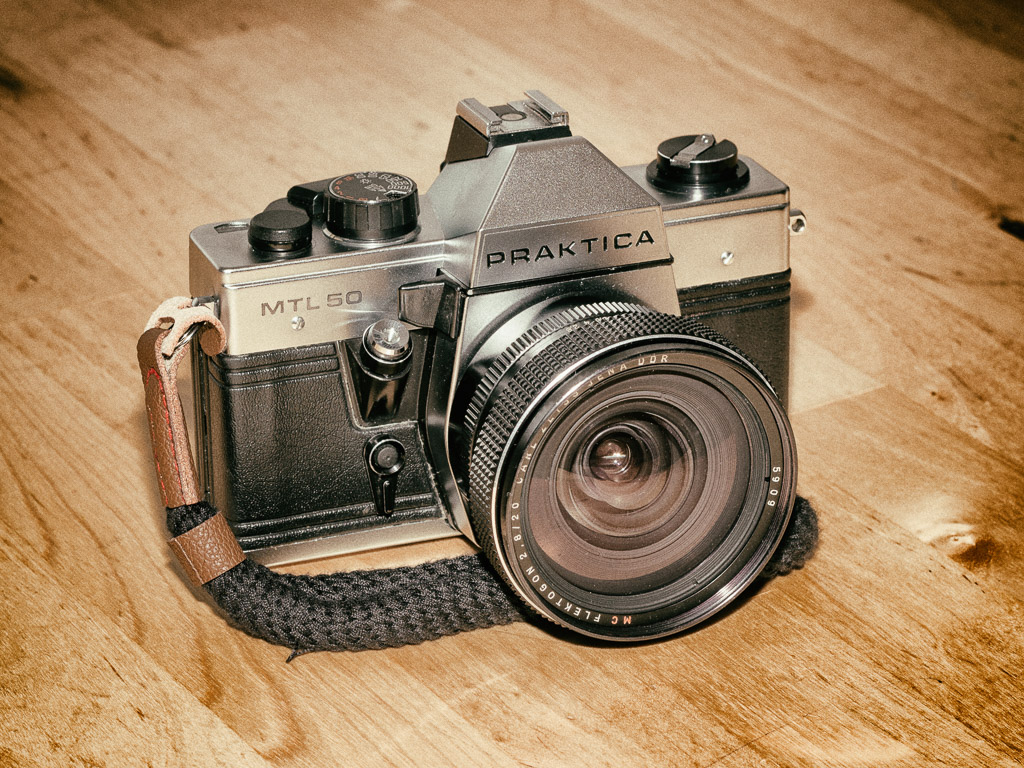Praktica MTL50 was the last model of the L series. Manufactured in the late 1980’s it was roughly concurrent with the EOS 650 from Canon.
In the 1950’s Exakta Varex might have ruled the SLR game, and the VLC model of the early 1970’s, with its interchangeable focusing screens and open aperture metering, could still be – if you squinted your eyes somewhat – considered a player when compared to the Japanese models of the era. But by the late eighties the technology gap between the East and West was huge.
The main selling points of the camera back when it was new – its rugged simplicity and compatibility with the lots of existing M42 lenses – were focused backward. The technology was something clearly 1970’es. And not top of the line seventies, but mid-range seventies to that. Gone were the advanced features like open aperture metering of the LC models.
My favorite little detail is that even though the battery was upgraded from obsolete PX 21 to a smaller (and still manufactured today) PX 28, the battery compartment door retained its 1970’s specs. It was not a major surprise that the production did not survive the fall or the Berlin Wall.

The fun part is that while the Praktica MTL50 might have seemed inferior when compared to the Japanese competition of the time it makes an excellent film body by today’s standard. The mechanics are simple yet sturdy, the shutter loud but reliable. There is next to no electronics to speak of – so the risk of an irreparable catastrophic failure is low.
And the other main selling point – compatibility with the vast reservoir of M42 lens – remains as relevant as ever. In my case the body is paired with the excellent Flektogon 2.8 / 20, the widest angle lens of the Jena Zeiss lineup.
